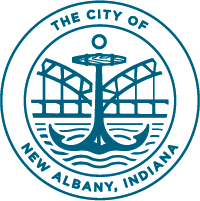City Moves to Protect Public Health, Eliminate Overflows
/At last evening’s City Council meeting, the City Council voted 7-2 in favor of bill G-16-03. If approved on final reading, this ordinance would authorize the construction of sanitary sewer projects that would eliminate the final remaining sanitary sewer overflows in the city.
What is a sanitary sewer overflow?
A sanitary sewer overflow occurs when untreated sewage is discharged from the system before it reaches the treatment facility. This is mainly caused by heavy rainfalls, as the rain will get into the system and overload it, causing untreated sewage to overflow out of the system through manholes or old or cracked pipes.
A Sanitary Sewer Overflow occurs through a manhole.
What has the city done in the past to lower the amount of Sanitary Sewer Overflows?
Updated maintenance plans and projects, like the Sewer Reline Project, have eliminated most of the sanitary sewer overflow sites that the City has experienced in the past. In 2010, the City identified nearly 80 sites where SSOs could occur. Currently, the City is down to 16 sites that could experience SSOs during certain conditions and rainfalls.
What project is the City considering to eliminate the final 16 sanitary sewer overflow sites?
The City Council is considering approving construction on a series of odorless, underground storage tanks. These tanks are being designed to eliminate all remaining sanitary sewer overflows and meet all final requirements demanded by the Environmental Protection Agency under the 1992 Consent Decree. During heavy rainfalls, the sanitary sewer system can overload on its peak capacity. This proposed system would redirect the untreated sewage into a storage tank, capturing it there until water levels in the sanitary sewer system lower to normal levels. The tank would then release the captured untreated sewage back into the system, where it will make its way to the plant for treatment.
What does the Environmental Protection Agency have to do with all of this?
In 1992, the EPA demanded that the City eliminate sanitary sewer overflows in the City of New Albany under a Consent Decree. This Consent Decree also stipulated that the EPA has oversight and final approval of any new developments that would tie into the New Albany Sewer System. The proposed project would eliminate the remaining sanitary sewer overflows and meet all final requirements of the 1992 Consent Decree.




